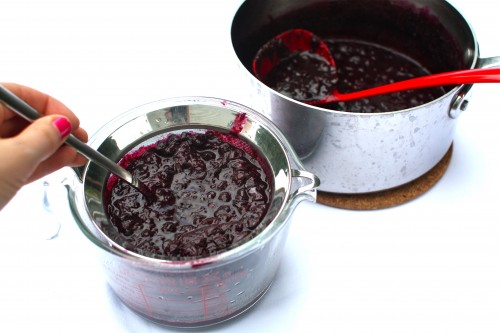sister herb
Official TTI Chef

(wild blueberry)

(cultivated bush blueberry)
The genus Vaccinium has a mostly circumpolar distribution with species in North America, Europe, Asia, and Africa.
Many commercially sold species with English common names including "blueberry" are currently classified in section Cyanococcus of the genus Vaccinium and come predominantly from North America. Many North American native species of blueberries are grown commercially in the Southern Hemisphere in Australia, New Zealand and South American nations.
Several other wild shrubs of the genus Vaccinium also produce commonly eaten blue berries, such as the predominantly European Vaccinium myrtillus and other bilberries, that in many languages have a name that translates "blueberry" in English.
Nutrients, phytochemicals and research
Blueberries have a diverse range of micronutrients, with moderate levels (relative to respective Dietary Reference Intakes) of the essential dietary mineral manganese, vitamin C, vitamin K and dietary fiber.
One serving provides a relatively low glycemic load score of 4 out of 100 per day.
Blueberries contain anthocyanins, other pigments and various phytochemicals, which are under preliminary research for their potential role in reducing risks of diseases such as inflammation and cancer.
Similar to red grape, blueberries may contain resveratrol.
Most polyphenol studies have been conducted using the highbush cultivar of blueberries (V. corymbosum), while content of polyphenols and anthocyanins in lowbush (wild) blueberries (V. angustifolium) exceeds values found in highbush cultivars.
In preliminary research, feeding blueberries to rats reduced brain damage in experimental stroke and may cause increased production of vascular nitric oxide that influences blood pressure regulation.
Additional research showed that blueberry consumption in rats altered glycosaminoglycans that are vascular cell components affecting control of blood pressure.
Other preliminary studies found blueberry consumption lowered cholesterol and total blood lipid levels, possibly affecting symptoms of heart disease. Wild South American varieties may contain higher levels of polyphenols, but this finding remains unconfirmed and uncertain of its significance.
Other preliminary research showed that supplementation of diets with wild blueberry juice may benefit the brain, improve memory and learning in older adults, while possibly reducing blood sugar and symptoms of depression.
----------------------------------------------------------
Blueberry is a plant. People use the fruit and leaves to make medicine.
Be careful not to confuse blueberry with bilberry. Outside of the United States, the name “blueberry” may be used for a plant called “bilberry” in the U.S.
Blueberry is used for preventing cataracts and glaucoma and for treating ulcers, urinary tract infections (UTIs), multiple sclerosis (MS), chronic fatigue syndrome (CFS), colic, fever, varicose veins, and hemorrhoids. Blueberry is also used for improving circulation, and as a laxative.
Some women use blueberry for labor pains and as a tonic after miscarriage.
The dried fruit and leaves are used for diarrhea.
Tea made from the dried leaves is used for sore throat and swelling (inflammation) of the mouth or the skin lining the throat.
Health providers have used blueberry juice as a contrast agent in magnetic resonance imaging (MRI). Contrast agents make it possible for radiologists to see and interpret the images.
Some people inhale the fumes of burning dried blueberry flowers for treatment of insanity.
How does it work?
Blueberry, like its relative the cranberry, might help prevent bladder infections by stopping bacteria from attaching to the walls of the bladder. Blueberry fruit is high in fiber which could help normal digestive function. It also contains vitamin C and other antioxidants.
http://www.webmd.com/vitamins-suppl...redientId=1013&activeIngredientName=BLUEBERRY














